Changing Key Signatures
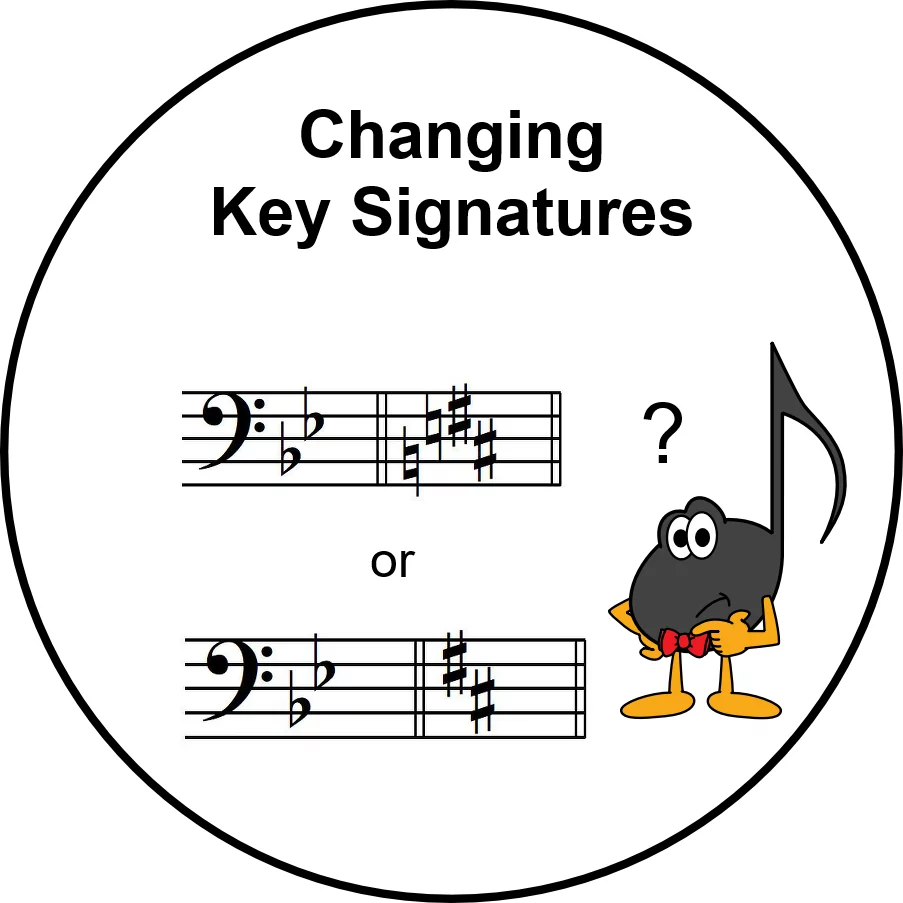
Do you know how to cancel or change Key Signatures in a Composition? Honestly, I thought I did but I was never 100% certain if I was doing it correctly. This Blog will explore 2 Options for Changing Key Signatures when writing music.
When writing Music, Composers may change Key Signatures for many different reasons. The Composer may want to:
- change the tonality from Major to minor (or minor to Major).
- create variations in pitch by transposing higher or lower.
Sometimes it is easy to use an accidental in the music (especially if you are only modifying a few measures). However, sometimes it is easier to simply cancel or change Key Signatures! Let us learn how to do this (and keep it super simple for our Students).
I am going to be very honest here. When editing the earliest editions of the Ultimate Music Theory Workbooks, I thought that a Double Bar Line automatically "cancelled" the outgoing (first or original) Key Signature. I didn't realize that there were actually rules when Changing Key Signatures! I love learning new concepts!
So, when would we want to change a Key Signature?
In a Composition, a "modulation" or change to a different Key Signature is used when you want to transpose (or move) the music into a different Key (and using accidentals would be awkward!).
In a Theory Exercise, changing Key Signatures allows for the same exercise to be repeated using a different Key Signature.
This Blog is NOT exploring WHAT Key Signatures are best to use when changing Key Signatures. This Blog is exploring HOW to make changing Key Signatures Super Simple for our Students.
So, let us start with an Exercise. Grab your UMT Whiteboard. Write the Key Signature (as indicated) below each Bracket.
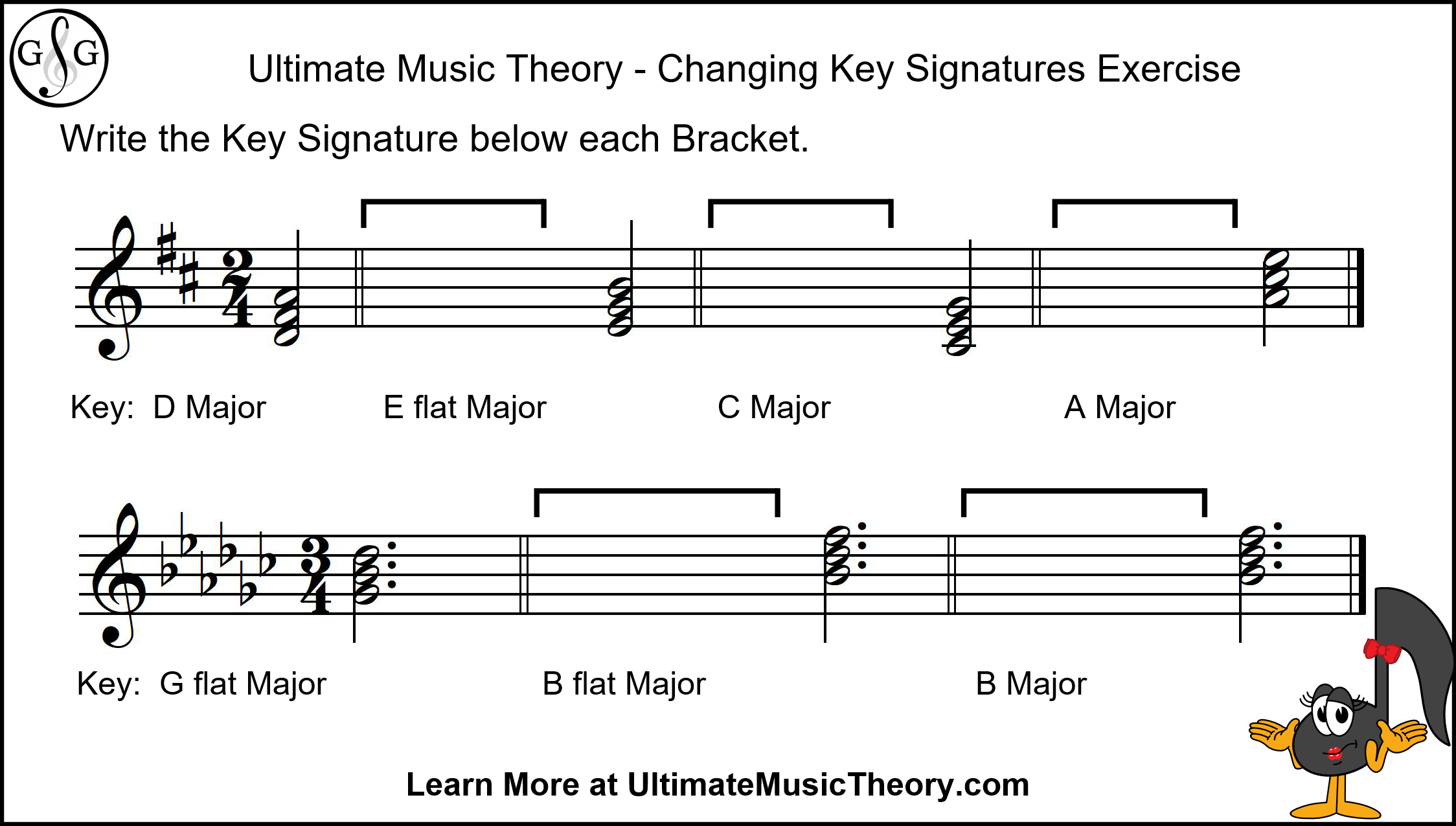
Okay - was that easy? Did you have any questions? How confident are you with your answers? Using your UMT Whiteboard makes it super easy to erase and re-write your answers.
Changing Key Signatures Option #1
A courtesy accidental (also known as a cautionary or reminder accidental) is an accidental that isn't strictly needed but is written in the music as a reminder from the Composer to the Performer of exactly what the pitch of the note is meant to be.
When changing Key Signatures from sharps to flats, or from flats to sharps, Changing Key Signatures Option #1 uses courtesy natural signs to cancel every sharp or flat in the first Key Signature before writing the second Key Signature.
If some of the flats or sharps are repeated in the new Key Signature, the only flats or sharps that need to be canceled by the courtesy accidental are the flats or sharps that are not used in the new Key Signature.
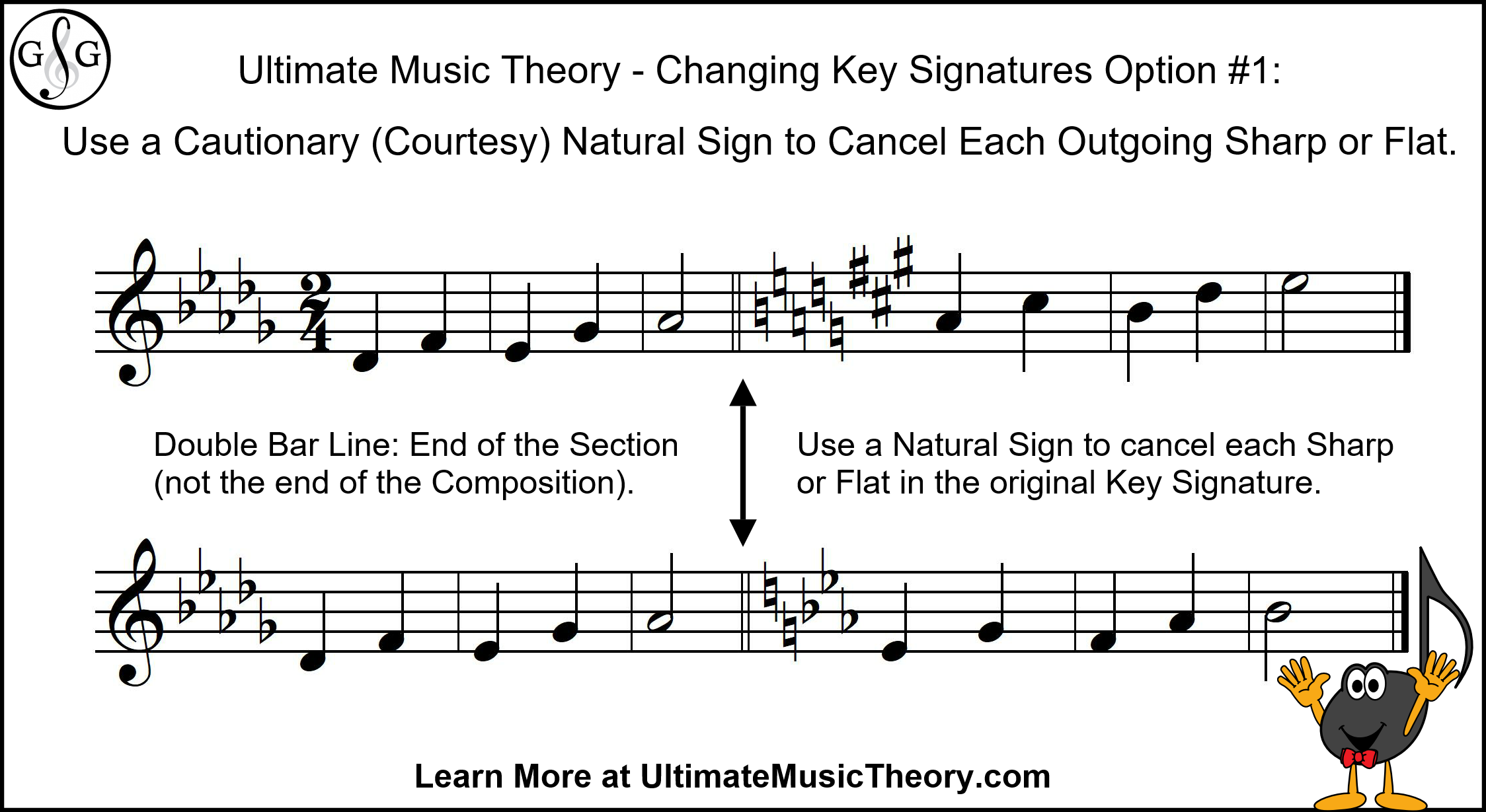
Changing Key Signatures Option #2
Another simple way to change a Key Signature is to just write the new Key Signature. It will automatically cancel the original (outgoing) Key Signature.
Unfortunately, there is a "new" Key Signature that this doesn't work for. Any guesses?
It is the Key Signature for C Major or a minor.
When your new Key Signature has NO sharps or flats, you must use the Courtesy Accidentals to cancel out each and every Sharp or Flat in the original Key Signature.
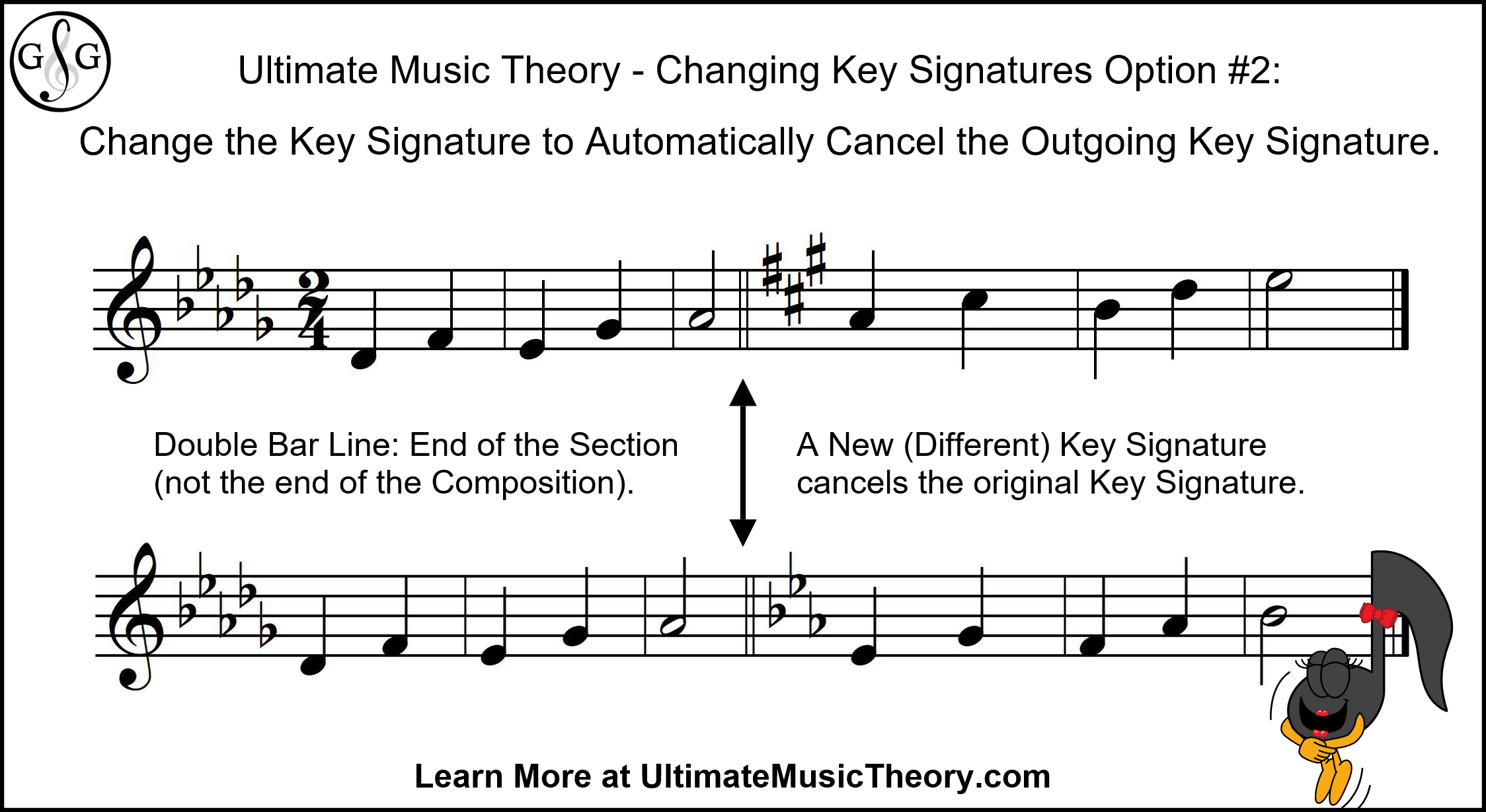
And now, for the Answers to our Original Question!
Remember that the Sharps or Flats in the Key Signature MUST be written on (or "in") their correct line or space.
If you write 3 flats, but accidentally place the flats as B flat, D flat and A flat (writing a flat on D instead of on E), then the entire theory question will be marked as "incorrect". The reason for this is simply that the D flat (accidentally written instead of the E flat) changes the entire tonality of the answer.
Just try playing a song with a Key Signature of 3 flats, but use B flat, D flat and A flat (instead of B flat, E flat and A flat). It certainly does not sound the same, does it!
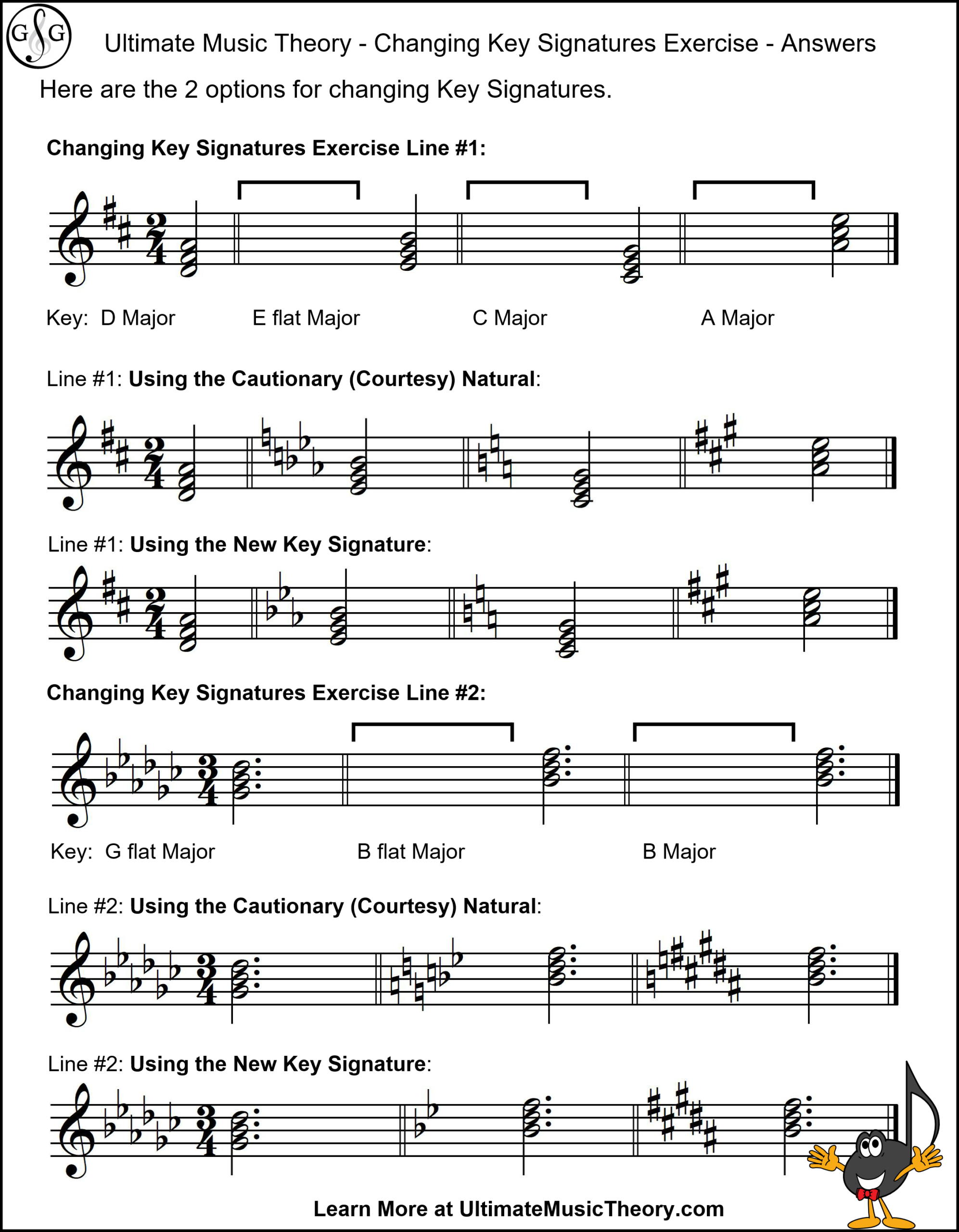
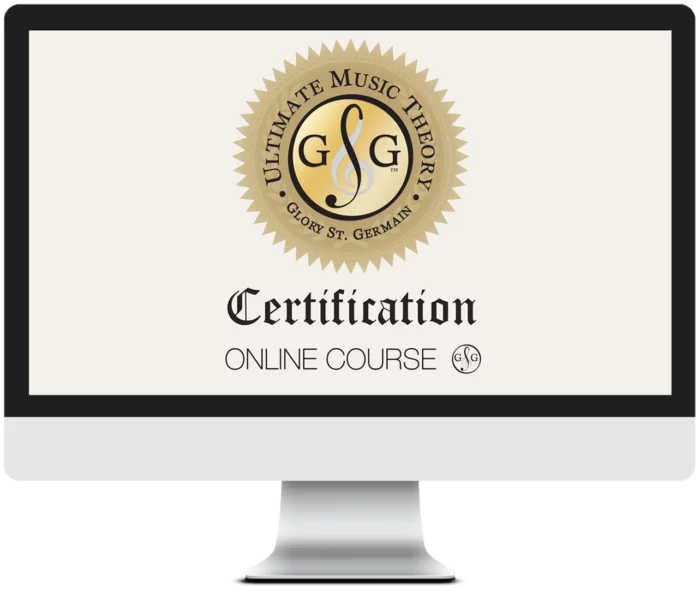
Ultimate Music Theory Certification Course Online Teacher Training includes: 50 Video Sessions, All Materials, Online Support,
Exam Marking & Certificate!
Click HERE to discover what you will learn in the Ultimate Music Theory Certification Course. Your professional development Online Teacher Training starts here.
Keep on Learning... With a Smile and a Song!
Shelagh McKibbon-U'Ren

